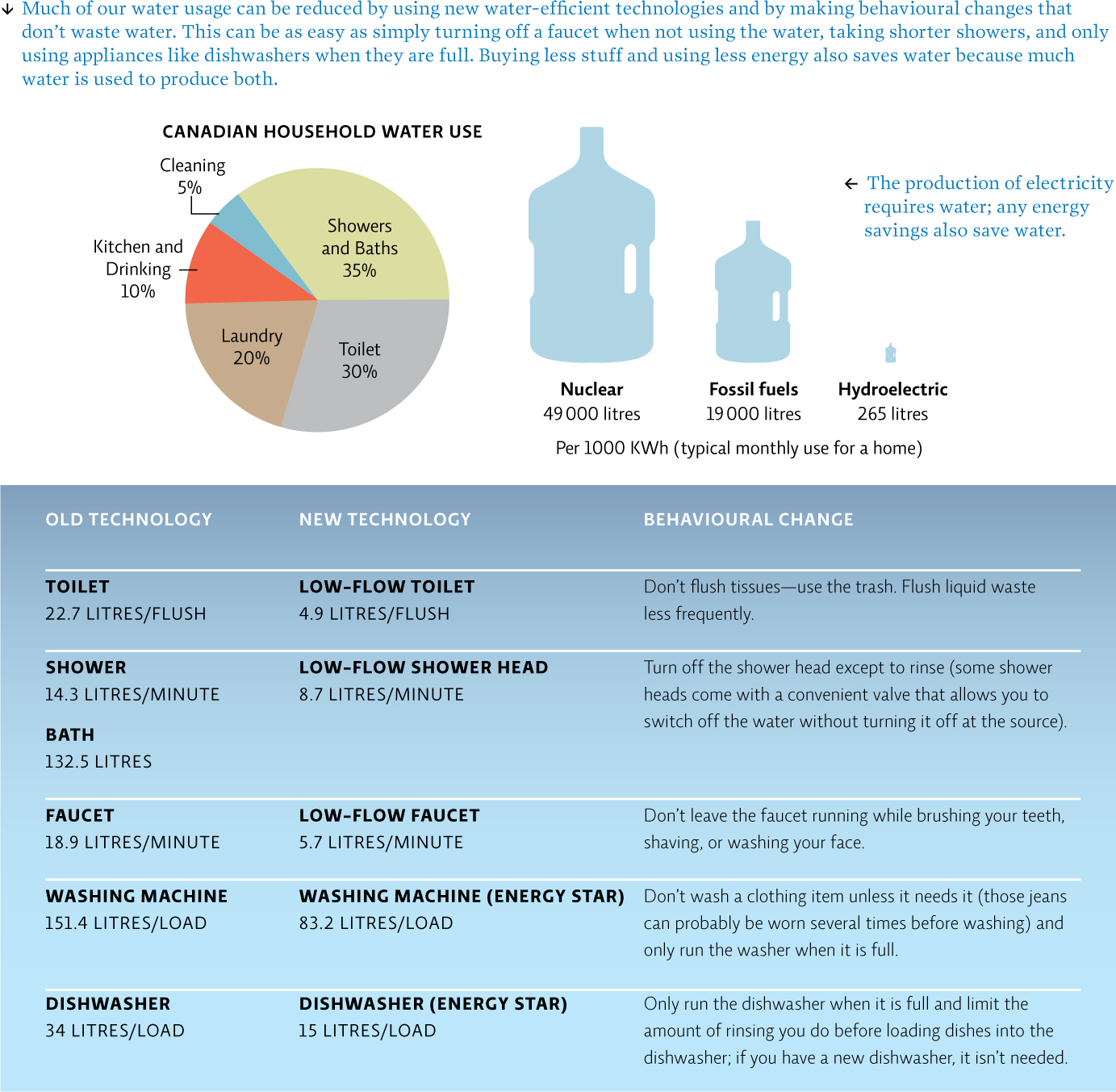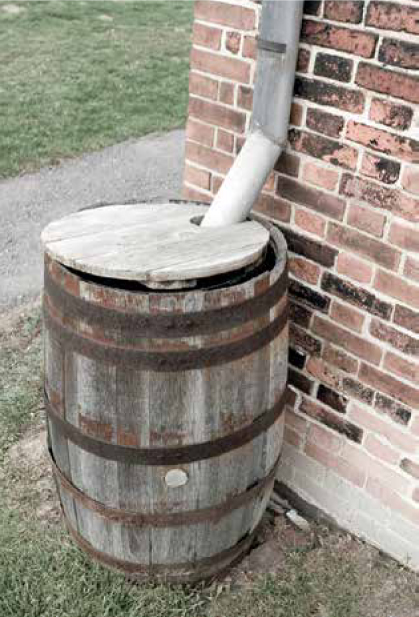15.6 Conservation is an important “source” of water.
The GWRS project was expensive: the total price tag to build the system came to about $487 million from federal, state, and local funding.
An easier and cheaper way to maintain water supplies is simply not to waste so much. For example, water-saving irrigation methods limit loss to evaporation and runoff, thus significantly reducing the water that is used. This has the added advantages of protecting surface waters and of preventing soil salinization (the buildup of salt as water evaporates), a common problem in dry climates. Choosing to plant crops more suited to the environment and water availability will also decrease agricultural water use. Many industrial processes are now designed to reuse water rather than discharge it into the environment. Small individual changes in the household can also save a lot of water. [infographic 15.7]

275
In the meantime, supplementing potable water supplies with recycled water is an innovative way to help ameliorate ongoing water issues, says Channah Rock, a water-quality specialist and assistant professor at the University of Arizona. It’s rare to find initiatives like Orange County’s, she says, but several communities—in Arizona, California, Nevada, and Florida, for instance— are reusing recycled water for nonpotable use, such as for irrigating landscapes and crops, filling fountains and fire hydrants, and flushing toilets. Communities are trying to “match the quality of water with the right use of water,” she says. Since people are prohibited from drinking the water that is used for irrigation, for example, says Rock, it’s not necessary to subject that water to the same advanced treatment processes as those used for potable water.
Public perception of recycled water projects actually varies, says Rock, depending on how familiar or confident people are with the treatment process and how plagued their community is by water-scarcity issues. In Arizona, which has regions affected by drought, a recent statewide survey found that Arizona residents generally supported most potential uses of recycled water and felt that it was very important that their community use recycled water to help meet its water needs. To many people, she says, what matters is that the water ultimately meets regulatory standards designed to protect public health. In fact, Rock says, the “toilet to tap” phrase is incredibly misleading, because it leaves out the testing, treatment, and scrutiny that take place in between.
The Groundwater Replenishment Program has received many accolades, including the prestigious 2008 Stockholm Industry Water Award. In 2010, just 10 years after Deshmukh finished graduate school, his work was profiled in National Geographic. It’s an achievement that fills Deshmukh with pride. “This is water that’s normally just wasted in the ocean. For the first time, it was being added to the water basin, cleaner and at a higher quantity than we’d done before.”
Once Skinner learned how the water would be treated, spoke to scientists about the effectiveness of the treatment process, and learned the project would have continuous oversight, he was reassured. “I feel they have successfully addressed my concerns,” he says. Skinner and Deshmukh even worked together to create videos describing the project. Today, Skinner, his wife, daughter, and grandson consume the recycled water. “I think it’s safe for my family to drink.”
Select reference in this chapter:
Hoekstra, A., and Chapagain, A. 2007. Water Resources Management, 21: 35–48.
BRING IT HOME: PERSONAL CHOICES THAT HELP
Regardless of whether our water comes from an aquifer or a local reservoir, we can make those water sources last longer by taking steps to use our water as efficiently as possible.
Individual Steps
 If you have a smartphone, download a water usage tracking app. Once you have a baseline, try to reduce it by 10%.
If you have a smartphone, download a water usage tracking app. Once you have a baseline, try to reduce it by 10%.
 Time your shower and try to reduce it by 1 to 2 minutes.
Time your shower and try to reduce it by 1 to 2 minutes.
 Have a container by the sink or shower to catch water while it warms up—just make sure not to get soap in it. Use this water for watering plants both inside and out.
Have a container by the sink or shower to catch water while it warms up—just make sure not to get soap in it. Use this water for watering plants both inside and out.
Group Action
 Install a rain barrel at home. Rain barrels allow people to use the rain that falls on the roof of a building to water plants as opposed to letting it run off into the storm drain. If you live in a dorm or an apartment, see if you can get permission to have a rain barrel installed.
Install a rain barrel at home. Rain barrels allow people to use the rain that falls on the roof of a building to water plants as opposed to letting it run off into the storm drain. If you live in a dorm or an apartment, see if you can get permission to have a rain barrel installed.
Policy Change
 Do you know where your water comes from? Talk to a city representative to find out where your water comes from, and what steps are being taken to make sure it lasts as long as possible.
Do you know where your water comes from? Talk to a city representative to find out where your water comes from, and what steps are being taken to make sure it lasts as long as possible.
 Encourage local policy-makers to ban the watering of lawns, or restrict the use of water for landscaping, to certain days of the week.
Encourage local policy-makers to ban the watering of lawns, or restrict the use of water for landscaping, to certain days of the week.

276